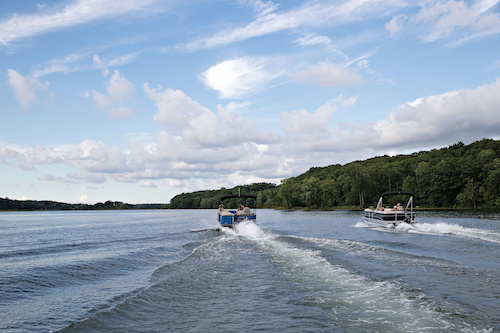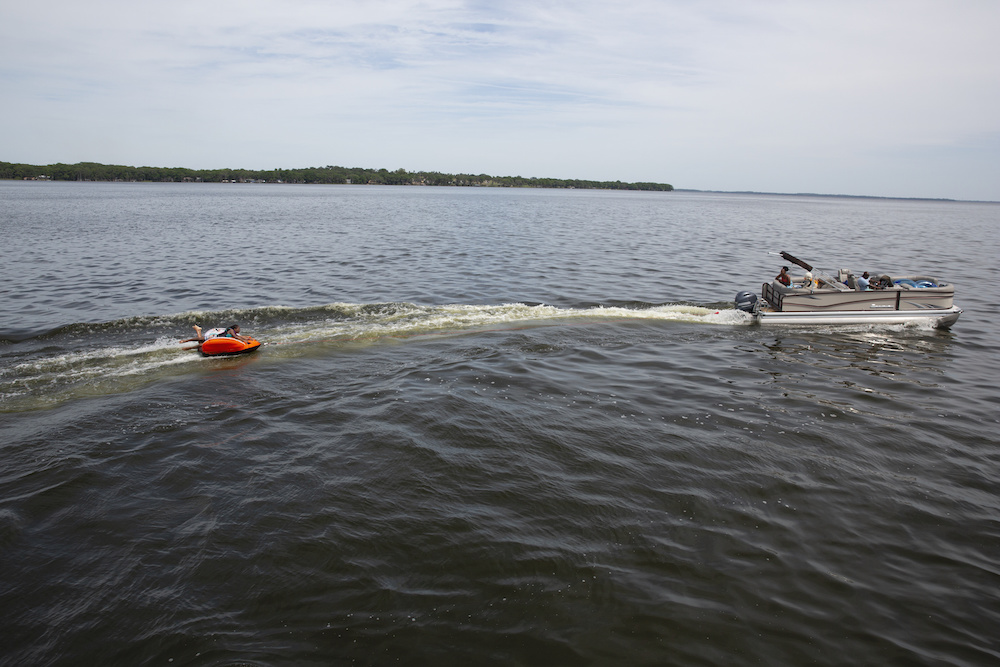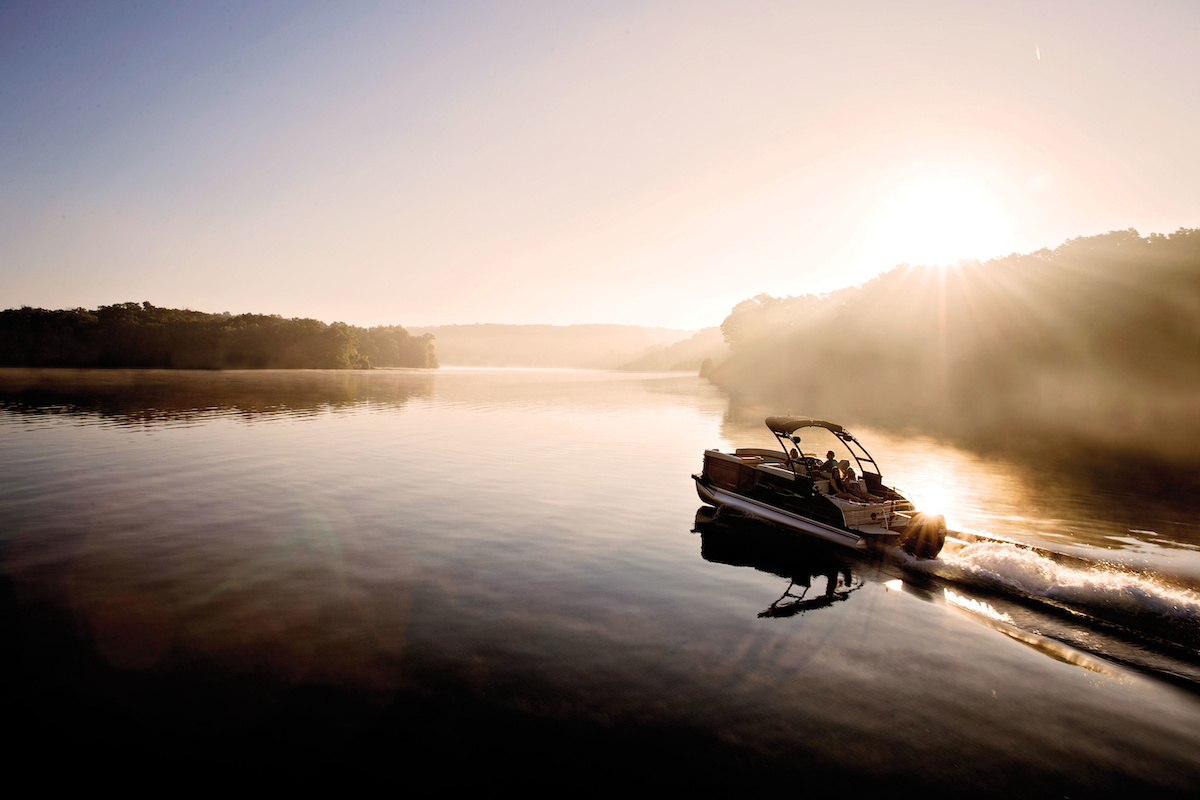The benefits of pontoon boat design—an expansive deck and outstanding stability—also affect how a pontoon handles. That performance is very different from the way a monohull boat behaves and requires some awareness from the captain, especially from a skipper used to piloting a monohull. 
Consider these factors when learning how to drive a pontoon boat:
- Factor in whether your pontoon has two tubes or three tubes.
- When making a turn, two-tube pontoons will lead to the outside of the turn.
- With a tritoon (three tubes), handling is improved with better agility.
- The wide deck and high fence of a pontoon can make visibility a little challenging.
- An elevated helm can help improve visibility.
- Consider using a lookout on the left (port) railing to watch blind spots.
- Leave the motor trimmed level for the most-efficient power transfer.
Two Tube vs. Three Tube Handling
There are two basic types of pontoon boat: those supported by two tubes and those supported by three tubes. Each has a specific personality on the water.
Twin-tube pontoons evenly distribute boat weight on each tube. When making a turn at speed, centrifugal force tends to force to the boat to lean to the outside of the turn. This is the exact opposite of the way a mono hull reacts by leaning into a turn and carving through the water. The twin-tube pontoon tends to skid or slide a little through the turn and is not really capable of making a quick 90- to 180-degree turn at speed. Once you get the feel for the pontoon’s lack of agility, it’s possible to simply recalibrate by planning maneuvers ahead of time, allowing more room, and slowing down before a turn. In fact slowing down often helps the boat change direction more efficiently.
Many triple-tube pontoon boats are designed to address this shortfall in agility. The center tube may be slightly larger in diameter than the outside tubes, or it may be mounted an inch of two lower. In either case the idea is that when the boat is put into a turn it will be able to tip or lean onto the inner tube. This is more comfortable for passengers and also helps the boat change direction more efficiently. Pontoon boat builders also add rails or spray-deflection devices along the length of the pontoon tubes designed to improve handling by lifting the entire boat and harnessing the energy of spray coming off the tubes. The result is that a triple-tube pontoon can be made to handle with agility approaching a monohull.
Learn More in Tritoon vs. Pontoon
Visibility & Sightline
The wide deck and high fence around the deck of a pontoon can make it challenging for a pontoon captain to see objects close to the boat, a handicap that is especially apparent when docking. One solution is an elevated helm, and option offered for many pontoons and a standard feature of deluxe models, which raises the entire helm four to six inches and improves visibility in all directions. Some models may have a tilting steering wheel that makes it possible for the captain to stand at the helm for improved visibility during close maneuvers. If you have a crew on board, it’s still a good idea to post a lookout to the left (port) railing to cover that blind spot.

More so than on most monohull boats, the pontoon captain’s sightline behind the boat can be limited by the fence and furniture surrounding the deck. This can be an issue if there are swimmers behind the boat or when the boat is being used to pull tubers. The captain needs to always be aware of any people in the water behind the boat before starting the motor or putting the boat in reverse or forward gear. Either post a spotter at the back of the boat, or get up from the helm and check to make sure there’s nobody in danger of a spinning propeller.
The pontoon captain should also never allow guests to stand or sit outside the fence on a bow deck when the boat is underway. If that passenger were to lose balance and somehow fall over board they could pass directly under the boat and be struck by the motor. This applies even to pontoon models with fishing seats on the forward deck—those seats should only be occupied when the boat is at rest and the motor is off.
Motor Trim
Because a pontoon does not really get on plane (skim over the water surface like a monohull) it does not respond much to motor trim. Leaving the motor trimmed level so that that the propshaft is horizontal offers the most-efficient power transfer; the motor is not pushing the bow down and increasing drag, and it’s not wasting power trying to lift the bow. Positioning the motor in a level position also keeps the prop in clean water for a good bite through turns.
You Might Also Like:
- Pontoon Boat vs. Deck Boat
- Tritoon vs. Pontoon
- Boat Buyer's Guide: How to Buy a Boat
- Owner's Resources
- Find the Right Boat Type for You


